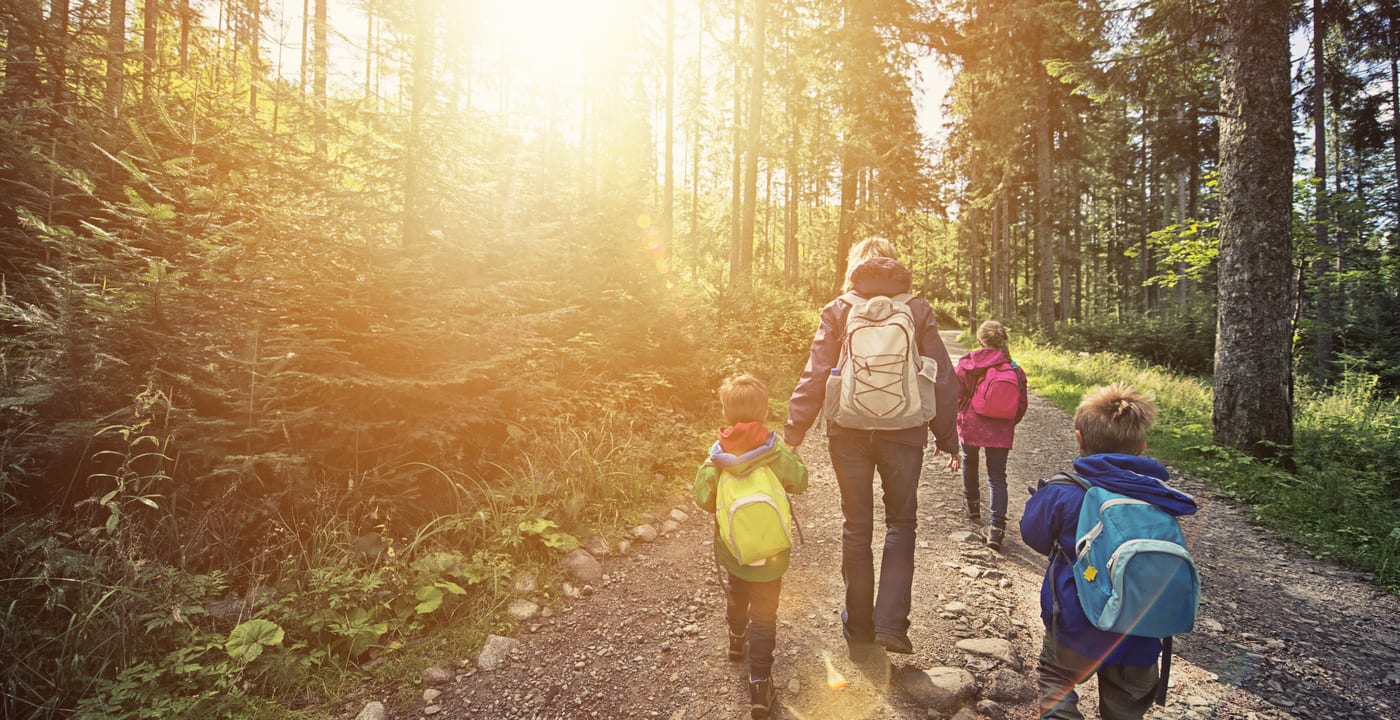Staying safe in the great outdoors: Answers to your questions about hiking

At a glance
- Be sure to pack hiking essentials such as a first aid kit, food, sunscreen and extra clothing
- Signs of heat stroke include nausea, blurry vision and lightheadedness
- Hiking can help your heart, blood pressure and coordination
Blessed with thousands of hiking options — from easy walks to summiting mountain peaks — we Northwesterners like to think of ourselves as intrepid outdoors folk, heading off confidently into the wilderness for day hikes of all sorts. But the truth is many of us are novices or hike infrequently, and even experienced hikers get into trouble from time to time.
No matter what your skill level, preparation and common sense can make the difference between enjoying a great day or getting injured or lost, so read on for answers to some common questions people have about planning a fun — and safe — hiking adventure.
How do you choose a day hike that matches your experience and expectations?
Doing your homework about the trail you plan to explore is key and helps ensure you don’t overestimate what you can handle. You can find detailed descriptions of hikes through the Washington Trails Association website, which match any skill level. There are plenty of guidebooks available too. Mountaineers clubs and outdoor stores are also great resources. Joining a group hike or a club can be a great way to get started and build your confidence.
What supplies should you bring on a day hike?
Ask any experienced hiker this question and they will likely refer to what’s known as the 10 essentials. These include a map, first aid kit, water, food, knife, sunglasses/sunscreen, extra clothing, rain gear, a knit cap for warmth and a brimmed hat to protect from the sun. A GPS device, which you can buy at outdoor stores or online, can also be a helpful piece of equipment (though they can be expensive), as well as a lighter or waterproof matches in case you need to light a fire to stay warm. The 10 essentials can be tailored according to the intensity of the hike.
Wear waterproof shoes, with traction on the bottom and mid-level or ankle-level support. Don’t wear worn out shoes or flip flops. Hiking poles can also be useful, as they help provide stability on uneven trail terrain and take pressure off knees.
And of course, bring your cell phone to take pictures of the gorgeous views. But don’t rely on having cell phone service everywhere.
After you choose a trail, what’s the most important thing to do next?
Tell family members and friends exactly where you are going, down to the trailhead location, how long you will be out and when you expect to return. Don’t forget to check the weather, too.
How much water and food should you bring?
Generally, plan on a half a liter of water per hour per person for moderate activity in moderate temperatures (this may vary based on exertion, temperature and other factors). Good snacks are trail mix, fruit, cheese. Avoid sugary foods.
How do I keep from getting lost?
Make sure you have a map of your hiking location. A printout of the trail description can also be helpful. Stay on well-marked, designated trails, and avoid the temptation to go off-trail even if it appears to be just a short detour.
For more experienced hikers on more remote trails, this is where the GPS device comes in. There are apps you can use, but because cell phone service isn’t always available, it’s better to have a device. If you do use a GPS device, checking your route on the device every 10 minutes or so is recommended to help make sure you are still on the trail. Of course, on very popular, well-marked hiking trails, that’s usually not necessary.
What should I do if I do get lost?
If you do have cell service, send out a text to a family member or friend, telling them you are at X location according to your GPS device. Call 911. Try to get back to the last place on your GPS route. If you are unable to contact anyone, and/or you don’t have a GPS device, follow recommendations from the U.S. Forest Service.
What are the signs of heat stroke and how should you prevent it and treat it?
Even in the Pacific Northwest, spending time outside during the summer months poses a risk for heat stroke, especially if you are hiking an exposed and/or challenging trail. Symptoms include nausea, blurry vision and lightheadedness. To prevent heat stroke, drink plenty of water, take breaks in the shade and wear a brimmed hat. If you do experience these symptoms, find shade, drink water, even sit in a cold stream for a bit to bring your temperature down.
If you are stranded overnight, how do you protect yourself from the cold?
Create warmth any way you can. Get out of the wind, keep your clothes dry, avoid exposed areas, find cover, build a fire. If you are going to be out for a long hike, plan for temperatures that are 20 degrees lower than expected. Bring more clothes than you need.
What are some of the benefits people get from hiking?
Hiking benefits your cardiovascular system, blood pressure, weight control and coordination. Beyond that, it can release stress and anxiety. People fall in love with hiking because they get in touch with nature. It’s calming and restorative. Also, new adventures forge new connections in your brain and give you a sense of accomplishment.
Editor’s note: This article was originally published August 13, 2019, and was updated on May 18, 2023.
What's next
- Find a provider to help keep you on track for your next adventure
- Search trails at the Washington Trails Association
- What to do if you get lost during a hike



